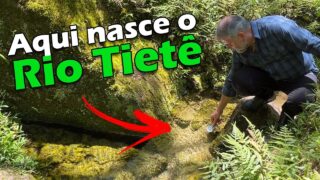Lost Tombs of the Pyramids | SPECIAL | National Geographic
0(chatter). WORKER: Mohammad! NARRATOR: In the
shadow of the pyramids, archaeologists make an
extraordinary discovery. MOHAMED: This oval
shape, this is the name
of the King, Kha’afre, the owner of the
second pyramid. NARRATOR: They unearth a stone
inscribed with a cartouche, an ancient symbol
of the pharaoh. MOHAMED: Kha’afre, this
is the most important
hieroglyphic sign and it’s dating
back 2600 B.C. NARRATOR: The Pharaoh,
Khafre, built the
second pyramid of Giza, could this astonishing
discovery of a 4,500 year old stone bearing the
pharaoh’s name, help to answer one
of Egypt’s greatest
unsolved mysteries? ASHRAF: This is a
great discovery. NARRATOR: What happened to
the missing bodies of the
great pyramid pharaohs? MARK: These are cold
cases, maybe the coldest
robbery case in the books. (theme music plays). NARRATOR: The ancient
Pyramids of Giza tower above the urban sprawl
of modern Cairo. The pyramids were built
4,500 years ago, as tombs for three generations
of pharaoh kings. The Great Pyramid of Khufu
stands over 450 feet tall. Khafre, his son, built his
tomb just 13 feet shorter. And Khufu’s grandson,
Menkaure, built
the smallest pyramid, but it’s still the height
of a 15 story tower block. These tombs are giant
fortresses, designed to
keep the pharaoh’s corpses and treasures safe for eternity. The man responsible
for preserving these
ancient monuments is Ashraf Mohie El Din, the
director of the Giza Plateau. Ashraf is a world famous
archaeologist and knows
more about this site than anybody else
on the planet. Today, he’s spearheading
a pioneering excavation
that he hopes will transform our knowledge of
the pyramids and the pharaoh
kings who built them. ASHRAF: Everybody’s dreaming
to come, to see the pyramid, I get the honor to
come every day. NARRATOR: Ashraf has
dedicated the last 20 years to
investigating this vast site. But there’s one area that’s
still shrouded in secrecy, largely untouched by modern
archaeologists, until now. Due south of the pyramids,
is a barren one square
mile desert landscape. It makes up the
entire southern half
of the Giza Plateau. It’s called the
Southern Field. Ashraf assembles a
team of over 60 workers,
to undertake a vast excavation beneath this
unchartered patch of desert. Over the course of the next
eight months, they will remove
hundreds of tons of sand, dumping it at the
base of the plateau. Our work actually here,
to clear the sands, step
by step, layer by layer, to see what is
under the sands. NARRATOR: Nobody knows what
secrets lie undiscovered
beneath the sands here. But historic excavations
across the Giza Plateau have led to
astonishing discoveries. West of the Pyramids,
archaeologists unearthed an enormous cemetery
for high officials. To the east, the tombs of
the Pharaoh Khufu’s family. And gigantic processional
causeways, with grand temples, including a temple devoted
to the great sphinx. Archaeologists have even found
the remnants of a harbor town,
where pyramid building blocks weighing up to 15 tons,
were delivered on
board fleets of ships. But no-one knows for sure
what lies buried beneath the largely unexplored
Southern Field. As Ashraf’s team
shift the sands… WORKER: Mohammad! NARRATOR: They unearth
a startling discovery, just a few inches
beneath the surface. NARRATOR: They find
a beautifully carved
limestone block. NARRATOR: The team are
onto something big. ASHRAF: It’s inscribed with
the name of the King Khafre. Kha Ef-Re, the owner
of the second pyramid. So, this means, this
block dates back to
the age of the pyramid. NARRATOR: What connects
this limestone block to
the pyramid pharaohs? Could this discovery here
in the Southern Field, finally shed light on
one of Egypt’s greatest
unsolved mysteries? What happened to the mummies
of the pyramid kings, Khafre, Khufu and Menkaure? The bodies of these
pharaohs were once entombed inside the pyramids, but
have never been found. ASHRAF: It’s a place to have
his mummy and his treasures, so it should be well
secured, well protected. NARRATOR: But keeping
the pyramids secure was
a formidable challenge. COLLEEN: We know from
both archaeological
and textual sources, that tomb robbery was always
a problem in ancient Egypt. NARRATOR: The
monuments failed. The first explorers to
enter Khufu’s pyramid
in the 9th century find the burial chamber empty. Khafre and Menkaure’s
bodies also disappeared. Doctor Mark Lehner is
a world leading expert
on the Great Pyramids. MARK: These are cold cases. Maybe the coldest robbery
case in the books. NARRATOR: Mark wants to know
how these enormous, fortified
tombs were broken into. He retraces the
robber’s footsteps into the Great Pyramid
of Khufu to investigate. Khufu built the first
and largest great tomb
on the Giza Plateau. It’s the only surviving
wonder of the ancient world. MARK: Here, they built
the most perfect, largest
pyramid of all time. And they never
equaled it afterwards. NARRATOR: It’s thought,
20,000 to 30,000 people
labored for two decades to complete this
incredible monument. Using enormous ramps to stack
up 2.3 million stone blocks. MARK: They did it with
such an exactitude, that
the base is off level only by an inch around
the entire perimeter. NARRATOR: This wasn’t just a
burial tomb, people worshipped
the pharaoh’s memory here after he died. The pyramid would have
looked very different
when originally finished. Mark examines smooth
limestone blocks at the
monument’s northern base. These blocks would have once
encased the entire pyramid. MARK: This brilliant outer
casing was also a line of
defense against anybody who would come in to
plunder the royal burial. It was one gleaming sheet of
stone and nobody knew exactly
where the entrance was. NARRATOR: But
robbers did break in. They didn’t hunt for
the entrance, because
that would have been concealed by the limestone. Instead, they tunneled right
through 100 feet of the
pyramid’s building blocks until they hit an
internal passage. Mark climbs up through the
pyramid’s grand gallery. These enormous structures
weren’t just protected
from the outside, inside there were
even more anti-theft
devices to negotiate. At the top, Mark finds
evidence of an ingenious
pyramid locking mechanism. MARK: Thick ropes would
have run down these slots. Those ropes would
have controlled slabs that would slide
down these slots. Boom, boom, boom. To close the entrance into the
burial chamber of the pharaoh. NARRATOR: Mark believes that
when it was time to lock the
pharaoh’s body in his tomb, workers used a complex
network of ropes to drop
enormous granite slabs… sealing the burial chamber. The Ancient Egyptians
then released three
even bigger blocks, that slid down the
ascending passage, before slamming into
the end of the tunnel, totally blocking it off. Finally, they concealed the
pyramid’s doorway, under a
seamless layer of limestone, making it impossible to
tell where the entrance lay. Ancient engineers thought
they’d built the perfect
pyramid protection mechanism, they were wrong. MARK: The anti-theft
measures didn’t work. The chamber has been empty
since recorded history. NARRATOR: We don’t know
who carried out this crime, but Mark has a theory about
when the robberies took place. MARK: It’s my sense that
it was done, maybe very soon
after the pyramid was complete because those who made the
forced tunnel, seemed to have
known how to turn it just to connect with the ascending
passage, which is the way
up to the king’s chamber. NARRATOR: We know from
the breath-taking discovery of
Tutankhamen’s golden treasures that pharaohs were
buries with great riches
for use in the afterlife. So the pyramid pharaoh’s
burial chambers would
have been rich pickings. But the pharaoh’s mummies
had no intrinsic value and
the ancient tomb robbers would likely have feared
these sacred remains. Ancient Egyptians believed
the key to eternal life was to preserve the
bodies of the dead. So when thieves ransacked
the tombs, they would
grab all the treasures buried with the pharaoh. They even opened the
coffins, to pluck gems and
amulets from the mummies. But we know from other
Egyptian tomb robberies that
looters may have feared the wrath of the dead pharaohs
and would have left their
preserved bodies behind. So why did all the royal
mummies disappear from
the Pyramids of Giza and where are they now? ASHRAF: Any Egyptologist
on this planet wishing to
find a mummy for a pharaoh. NARRATOR: If archaeologists
find those missing mummies, it would be an
enormous breakthrough in our understanding of these
ancient and enigmatic kings. MARK: We don’t have a New York
Times or a Sunday Times that
tells us about these pharaohs. We just don’t know how old
they were, what they looked
like, their personalities, we know these pharaohs
primarily from their monuments. NARRATOR: Could the corpses
of Khufu, Khafre and Menkaure
have been moved and reburied elsewhere on the Giza
Plateau to keep them safe
from further robbers? NARRATOR: Ashraf believes
that this stone, carved
with King Khafre’s name is just the tip of the iceberg. What else lies buried
in the Southern Field? (shouting, chatter). NARRATOR: Ashraf’s
team is now eight weeks
into their pioneering 35 week excavation of
the Southern Field. The more sand they remove,
the more extraordinary
discoveries they make. (speaking native language). NARRATOR: Unearthing
ancient clay pottery. ASHRAF: They’ve got
lots of jars, they put
beer, honey, milk, wine, even cheese to be
re-used in afterlife. NARRATOR: And huge mudbrick
structures Ashraf believes are the walls of
long buried tombs. ASHRAF: It extend from
here to over there. You see my colleague
over there? NARRATOR: And where there
are tombs, there are bodies. (speaking native language). NARRATOR: As the team
continues to dig, they unearth dozens
of burial shafts. ASHRAF: We have more
than 50 shafts here, so
I’m cleaning one by one. NARRATOR: It’s now clear
that this unexplored patch of
the Giza Plateau was once an important necropolis,
a vast cemetery dating
back some 4,500 years. Who was buried here? Many of the shafts are
either empty or unfinished. But some… NARRATOR: Still contain
remnants of burials. NARRATOR: One particular
shaft astounds them. ASHRAF: Wow. NARRATOR: This shaft leads
to an interconnected network
of underground chambers. ASHRAF: I think there is
many chambers to explore. NARRATOR: It’s an
extraordinary discovery, this mysterious network of
chambers is a mass grave. ASHRAF: Lots of remains
of mummies, skeletons, bones and skulls. This is one of
the bandages which was
used to wrap the body. NARRATOR: Could these tombs
contain the missing bodies
of the pyramid pharaohs? Some skeletons are ruled
out because of their size. ASHRAF: Oh my God. It’s a burial for a baby. I’m working more than 20
years now as archaeologist. This is for the first
time for me, to discover
a burial for a baby and there is a beautiful mask. NARRATOR: In one hidden
corner of the tomb network… ASHRAF: Wow. Wow, wow, wow, wow. NARRATOR: Ashraf makes
another spectacular discovery. ASHRAF: A mask with
a Golden sheets. Wow! A golden finger! I can see the nail. Oh my gosh, he
still has a hair. A skull with a hair. The whole coffin was
covered with sheets of gold. NARRATOR: These golden
shards once formed part of
an ornately gilded coffin. ASHRAF: I believe he has
a high rank to have this
gold sheets on his coffin. NARRATOR: Such liberal
application of gold would
have been reserved only for the wealthy elite and
high status Egyptians. And to find an elaborate
burial amongst the
scattered remains is a surprise for the team. They must now analyze the body
to investigate who was buried
inside this golden coffin. Could these even
be the remains of a
great pyramid pharaoh? Astonishingly, this wouldn’t
be the first pharaoh’s body to be found in a
humble mass tomb. Dr Colleen Darnell has
devoted her career to studying
Egyptian beliefs about death. She investigates a spectacular
collection of mummies that
could shed light on why the bodies of the pyramid
pharaohs weren’t found
inside their enormous tombs. These mummies date from
Egypt’s New Kingdom, a time some 1300 years after
the Giza pyramid pharaohs. In the New Kingdom, pharaohs
no longer advertised their
burials with giant pyramids. Instead, they conceal their
tombs, carving them deep underground in the
Valley of the Kings. It was in this valley that
the New Kingdom pharaoh, Tutankhamen and his golden
treasures, were found. But the final resting
place of these pharaoh’s
mummies, wasn’t so final. COLLEEN: This is the mummy
of Rameses the third. You might think that he
was found in his tomb in
the Valley of the Kings, but over 100 years after
he died, his burial was
removed and his mummy was re-wrapped to be interred
in an unmarked tomb. NARRATOR: Inscriptions
on the linen wrappings allowed
archaeologists to identify the body of Rameses III and he
wasn’t the only pharaoh to be removed from his
tomb and re-buried. Thutmose the II, believed
by some to be the pharaoh
from the Bible’s Exodus was buried with him. So was Seqenenre Tao, a
king whose mummy suggests he came to a gruesome
end in battle. There were many more pharaohs
in that unmarked tomb, spanning some four and a half
centuries of Egyptian history. COLLEEN: Most of the kings
of the New Kingdom were buried together in
that unmarked tomb. NARRATOR: Why were these great
pharaohs removed from their
tombs and re-buried together? And could the same fate have
befallen the pyramid pharaohs; Khufu, Khafre and Menakaure? NARRATOR: Dr Colleen
Darnell hunts for clues
to solve the mystery of why dozens of pharaohs
were removed from
their original tombs and re-buried in
an unmarked grave. Could this ancient
papyrus hold the answer? COLLEEN: One of the
more remarkable documents to
survive from Ancient Egypt is a transcript of the
confessions of a tomb robber. NARRATOR: The papyrus was
long ago torn down the
middle, the two halves now live in different museums. But by bringing the pieces
together, Colleen can decode
the ancient confessions of a New Kingdom tomb robber
named Amenpnufer, who broke into the tomb of a
pharaoh named Sobekemsaf II. COLLEEN: “We took our copper
tools and we broke into its very inner chamber.” And we know that they’re
going through the mummies
themselves because they talk about a piece of Gold
jewelry at the neck of the king. NARRATOR: Amenpnufer admits
to digging a tunnel into
the tomb of the pharaoh. Once inside, he took as much
gold as he could carry, but he was caught. For his crimes, a brutal
punishment, sentenced
to death by impalement. This tomb robbery and
others like it, alarms
New Kingdom authorities. Their Pharaoh’s mummies,
so sacred to the Ancient
Egyptians, aren’t safe. The authorities take action. COLLEEN: In order
to safeguard the royal
mummies, they were moved, re-wrapped and buried
together in an unmarked tomb. We know that the plan
worked, by moving them from
the Valley of the Kings, to an unmarked tomb,
they survived for
thousands of years. NARRATOR: If all of
these kings were moved
to an unmarked tomb, could the same fate
have befallen the
great pyramid pharaohs, Khufu, Khafre and Menkaure? Could their bodies have
been moved and buried in
an unmarked grave and could those graves lie here
in the Southern Field? Ashraf’s team has cleared
up to 32 feet of sand. Their work reveals the vast
scale of this cemetery. ASHRAF: We have
one, two, three, four,
five tombs over there. Those tombs were completely
covered with sand. NARRATOR: The most impressive
tomb they find lies at the
far edge of the site. The tomb is an incredible
limestone structure. Detailed engravings
cover its walls. One hieroglyph is familiar. ASHRAF: So, Kha-Ef-Ra. It was the same cartouche
in the block we found
in the excavations here. NARRATOR: Ashraf now believes
the block of limestone
bearing Khafre’s name may have once formed part of
this beautifully carved tomb. But this tomb doesn’t belong
to the pharaoh himself. ASHRAF: The hieroglyphics
here tells about his title. Webb Nisu. Kh F Ra, Hemm, netter,
the priest, so this guy, he was the priest of
the Temple of Khafre. NARRATOR: This was the burial
chamber for a high priest. This priest would
have worked in the temple
attached to Khafre’s pyramid. The temple was built
as a place of worship to keep the pharaoh’s
memory alive after death. The discovery suggests
that this Necropolis was
no ordinary cemetery. It was a burial site for
high-ranking officials who worked in the
very heart of Giza. ASHRAF: To find such a quality
of hieroglyphics like this, dates back from 4,500 years, this really a great discovery. NARRATOR: Further study of
this tomb could not only shine
a light on the life of Khafre, the great pyramid king, but
also those who worshipped him. 11 weeks into the dig,
further excavations reveal
another strange shaft. This shaft is carved almost
ten feet deep into the rock. ASHRAF: Those blocks they
are covering the entrance
of the burial chamber. It means it’s intact. NARRATOR: Ashraf sends
site inspector, Ahmed Ezz, down to help clear the blocks. NARRATOR: They lift the last
of the enormous 80 pound
blocks that covered the entrance to the
burial chamber. NARRATOR: At the
bottom of this newly
discovered burial shaft, in Giza’s Southern Field,
Ashraf is inspecting an
exquisitely painted coffin. NARRATOR: This coffin
is an extraordinary,
one of a kind find. NARRATOR: These markings
protect the owner’s body so that he can flourish
in the afterlife. And this coffin even
has a false lid… ASHRAF: Wow. NARRATOR: An extra
line of defense. NARRATOR: In fact,
coffin after coffin
are being discovered scattered all across
the excavation site. Some are buried
in shallow sand. NARRATOR: The team decode
the markings on the coffins. ASHRAF: It’s like your
wife is giving birth,
I wish I can hold this coffin between my
arms, he’s my baby. NARRATOR: The coffins were
buried on top of and inside
the old kingdom tombs. But while the tombs
may date back to the
time of the pyramids, the caskets inside are
from a much later period. This style of wooden coffin,
carved and intricately painted
to look like its inhabitant, did not exist when the
pyramids were constructed. ASHRAF: It’s much
later than the pyramids
time, the decorations, the motifs of the scenes,
it’s a style of late period. NARRATOR: The coffins of
the Southern Field date
from the late period, the term given by
archaeologists to a time 2000 years after the
Old Kingdom pharaohs. Why do these graves lie
amongst the tombs of
their ancient ancestors in the shadow of the pyramids? The time scales are enormous. The Pharaoh Khufu built
the first Great Pyramid around 2,500 BC. A further 1300 years passed, before the rule of the
boy king, Tutankhamen. And the late period
coffins unearthed in
the Southern Field came another 700 years
after even King Tut. In fact, these Egyptians
lived almost as close to
smart phones as they did to the pyramid pharaohs. It’s a remarkable twist to
the tale, the Southern Field
appears to be a cemetery on top of a cemetery,
created 2000 years apart. This burial site is
a window into an astonishing
chapter of Egyptian history. This site was once
an important old
kingdom necropolis, with limestone and mudbrick
tombs covering the hillside. But the cemetery’s
peace was shattered. 2000 years later, the
Late Period Egyptians
suddenly began to re-use the necropolis,
carving fresh shafts and re-opening
ancient burial chambers. Burying their dead on top of
and inside the ancient tombs
of the Old Kingdom Egyptians. The discoveries here
lead Ashraf, director
of the Giza Plateau, to propose an incredible idea. Could these late period
Egyptians have played a
role in the disappearance of the bodies of the
pyramid kings, Khufu,
Khafre and Menkaure? NARRATOR: Although late period
Egyptians lived two millennia after the great
pyramids were built, they had an obsession
with the ancient
pharaohs who built them. NARRATOR: Why did late
period Egyptians have
such a fascination with these ancient
pyramid pharaohs? Dr Colleen Darnell
is a world expert in
decoding ancient texts. She believes the walls
of a lesser-known pyramid, nine miles south of
Giza, in Saqqara, could reveal the
reason late period Egyptians idolized the pyramid
pharaohs and may even have sought to protect and
preserve their royal mummies. Saqqara is an
ancient cemetery. It neighbors the Giza
necropolis and built
around the same time as the Great Pyramids. 17 pharaohs are buried here. Colleen investigates
the pyramid of Unas. It was built by King Unas who
lived just 100 years after
the Giza Pyramid pharaohs. COLLEEN: The exterior
of the pyramid of
Unas is pretty eroded. But on the inside, it’s
remarkably well preserved. NARRATOR: The interior of
Unas’s pyramid is covered
with mystical symbols. These are the Pyramid texts,
magic spells designed to help the deceased achieve
immortality in the afterlife. These spells also reveal
why Late Period Egyptians
may have gone hunting for the bodies of the
Giza’s pyramid kings. NARRATOR: Colleen Darnell
decodes ancient spells carved into the walls
of the pyramid of Unas. COLLEEN: One of the spells
begins, “Hail King Unas,”
and then it says, “You have not gone away dead,
you have gone away, alive.” He’s achieved eternal
existence in the afterlife. NARRATOR: These spells
don’t just grant the
pharaoh immortality, they’re also a road map to
becoming an all-powerful God. COLLEEN: It says,
“The one whom he desires
to live, he shall live and the one who he desires
to die, he shall die.” The spells of the pyramid
texts describe how the king becomes a god
in the afterlife. NARRATOR: These texts reveal
that pyramids weren’t just burial chambers, they
were God-making machines. No pyramid texts were found
inside the Giza pyramids. But Colleen thinks that’s
because the architects never
carved them into stone. COLLEEN: It’s entirely
possible that the pyramids
of Giza would have had pyramid texts on papyrus
scrolls included in
the original burial, but all of that material
is now lost to us. NARRATOR: The pyramid pharaohs
built their enormous tombs to
become Gods in the afterlife. And 2000 years after their
deaths, that’s exactly
what they’d become. They were now Gods to the
late period Egyptians. The late period marked
the dying days of
native Egyptian rule. Between 664 to 332 BC,
Egypt was under attack from Assyrians,
Babylonians and Persians. In the Empire’s
final decades, late period Egyptians
returned to Giza. They looked to the
pyramid pharaohs, Khufu,
Khafre and Menkaure for protection in the afterlife. These were now their
Gods and the late period Egyptians wanted to be
buried beside them. COLLEEN: Late period
Egyptians idolized Khufu,
Khafre and Menkaure. ASHRAF: That’s why they
want to have their tombs
nearby the pyramids, they believed the pyramid
pharaohs, they are Gods. NARRATOR: The late period
Egyptians worshipped the
pyramid pharaohs as Gods. So if they did find the
bodies of the ancient kings
left behind by looters, they would have wanted
to preserve and protect
the royal remains. Just like the mummies
of the New Kingdom pharaohs, re-wrapped and re-buried near
the Valley of the Kings. Could the late period
Egyptians have moved the
royal mummies to their own necropolis in the Southern
Field to keep them safe? After 12 weeks of
intensive excavations
on the Southern Field, Ashraf’s investigation
enters a new phase. ASHRAF: Yal. Ahmed. NARRATOR: The team will now
begin to open the coffins
found around the site. ASHRAF: Wow.
It’s a mummy. But, it’s not for a tall or
a big guy, maybe he’s 15, 16, he didn’t have
enough time or money to afford a
big burial for him. NARRATOR: Ashraf works with
expert osteoarcheologist
Dr Amira Shahin, to examine the bones excavated
from the network of tombs
beneath the Southern Field. AMIRA: We have
another clavicle… NARRATOR: But there is one
burial in particular that Ashraf is keen for
her to investigate. Can Amira’s analysis
finally reveal who is
buried in the golden coffin? Will the body reveal evidence
of their status and a reason
for their elaborate burial? Could this even be the
body of a pyramid pharaoh? Re-buried by late
period Egyptians? AMIRA: According to
the shape of the skull,
these tiny bones. This is most probably
a skull of a female. She died when all her
teeth are present, so
she’s really young. NARRATOR: This is no pyramid
pharaoh, but the bones do reveal a remarkable
ancient practice. AMIRA: This is not normal. NARRATOR: Amira finds
a substantial hole just
above the right eye. The hole is unusually smooth. AMIRA: This is the surface of
the bone, it is not broken. This hole happened
before death. It has been made
by a physician. NARRATOR: This smooth,
circular hole, suggests that this skull had undergone an
operation, ancient surgery. NARRATOR: These bones
might not be those
of a pyramid pharaoh, but they’re an important
discovery, revealing physical
evidence of ancient surgery, in a civilization known
for some of the earliest
surgical procedures. What of Khufu,
Khafre and Menkaure? Can Ashraf’s excavations
reveal evidence to help
solve the mystery of what happened to
their mummified bodies? And what role, if any,
late period Egyptians played
in their disappearance. Incredible evidence may
finally provide the answers. Evidence from inside
Menkaure’s pyramid. NARRATOR: The enormous
monuments of Khufu and
Khafre tower 260 feet above the smallest pyramid
on the Giza Plateau. But Khufu’s grandson,
Menkaure, still built a
tomb that towers over 200 feet tall and weighs
in at 600,000 tons. In the hunt for the
missing pyramid pharaohs, this could be the most
important monument of them all. While the other two great
tombs have been open to
modern explorers since the beginning of
recorded history, the entrance to
Menkaure’s pyramid was
buried deep in the sand, until the early 19th century,
when archaeologists finally dug down to access
the burial chamber. Inside, they found a
mysterious wooden coffin. The coffin now resides at
the British Museum and the inscriptions are worn
and difficult to read. Archaeologist, Doctor Lehner,
is a world leading expert
on the pyramids of Giza. He examines a copy
of a drawing made
almost 200 years ago. MARK: So this is the wooden
coffin, found in 1837. It’s inscribed for
Menkaure, as Pharaoh. And it says, “Oh Osiris,
Menkaure, king of
upper and lower Egypt. They cause that you’ll exist
like a God, without enemies.” NARRATOR: The text states
that this coffin contains
Menkaure’s mummified body. It reveals that he hoped
to become a God upon death, just like the other
pyramid pharaohs. But there’s a mystery,
the coffin is wooden
and shaped like a human. This style of coffin
is identical to the
late period burials being unearthed by Ashraf
in the Southern Field. MARK: It’s named for
Menkaure, but this is
not his original coffin. Everything about this
suggests that it was
put into the pyramid 2000 years after Menkaure died. And this is very strange. Is this a re-burial
of Menkaure, some
2000 years later? NARRATOR: 2000 years
after Menkaure was first
locked into his pyramid, late period Egyptians
entered the tomb, perhaps themselves hunting
for the pharaoh’s body. They likely found the
burial chamber desecrated
from robbers and maybe they found this body too. But Menkaure was a God,
they couldn’t leave his
sacred body unprotected. Instead, they re-wrapped
the mummy and placed
it in a new coffin. Holding a fresh funeral for
Menkaure, restoring his body
into the pyramid he built. MARK: We know at this period
they revived the memories of
these kings and in this case apparently, re-doing
Mankaure’s burial at
this time of renaissance, when they’re reviving the cult
of these long dead pharaohs. NARRATOR: Menkaure’s
body wasn’t found
inside the casket. But the coffin itself
is evidence that a pyramid
pharaoh was moved by these late period Egyptians
and restored into
his ancient tomb. A God reburied 2000
years after he died. Could the same fate have
befallen the other pyramid
pharaohs, Khufu and Khafre? There’s one way to
get answers, find
the missing bodies. We now know that the
vast Southern Field was
an important burial site for these late
period Egyptians. And Menkaure’s coffin is
evidence that late period
Egyptians did indeed go looking for the ancient
pyramid pharaohs to protect
and preserve their mummies. This huge expanse of
desert may offer up a
pyramid pharaoh yet. ASHRAF: I will not stop
digging here because every
day I get more excited to find more things, more
finds, more discoveries. NARRATOR: Months of intense
digging has unearthed a treasure trove of
unique discoveries. From the beautifully carved
tomb of a high priest who worked in the
shadow of the pyramids. To the shattered golden coffin
of a mysterious young woman, the recipient of
ancient surgery. And they’ve found countless
other artifacts that reveal
extraordinary details about the lives of those who built
Egypt’s great pyramids and the
people who worshipped them. ASHRAF: Since I was a
child, I was dreaming
to be an excavator, to find new discoveries,
and I think I’m making
my dream come true, by being here in this site. NARRATOR: The hunt for
the pyramid pharaohs, Khufu, Khafre and
Menkaure, will continue. ASHRAF: Maybe in the future we
will find their mummies hidden
somewhere around the pyramid, maybe not, but it’s going
to be fun to keep looking. Captioned by Cotter
Captioning Services.









